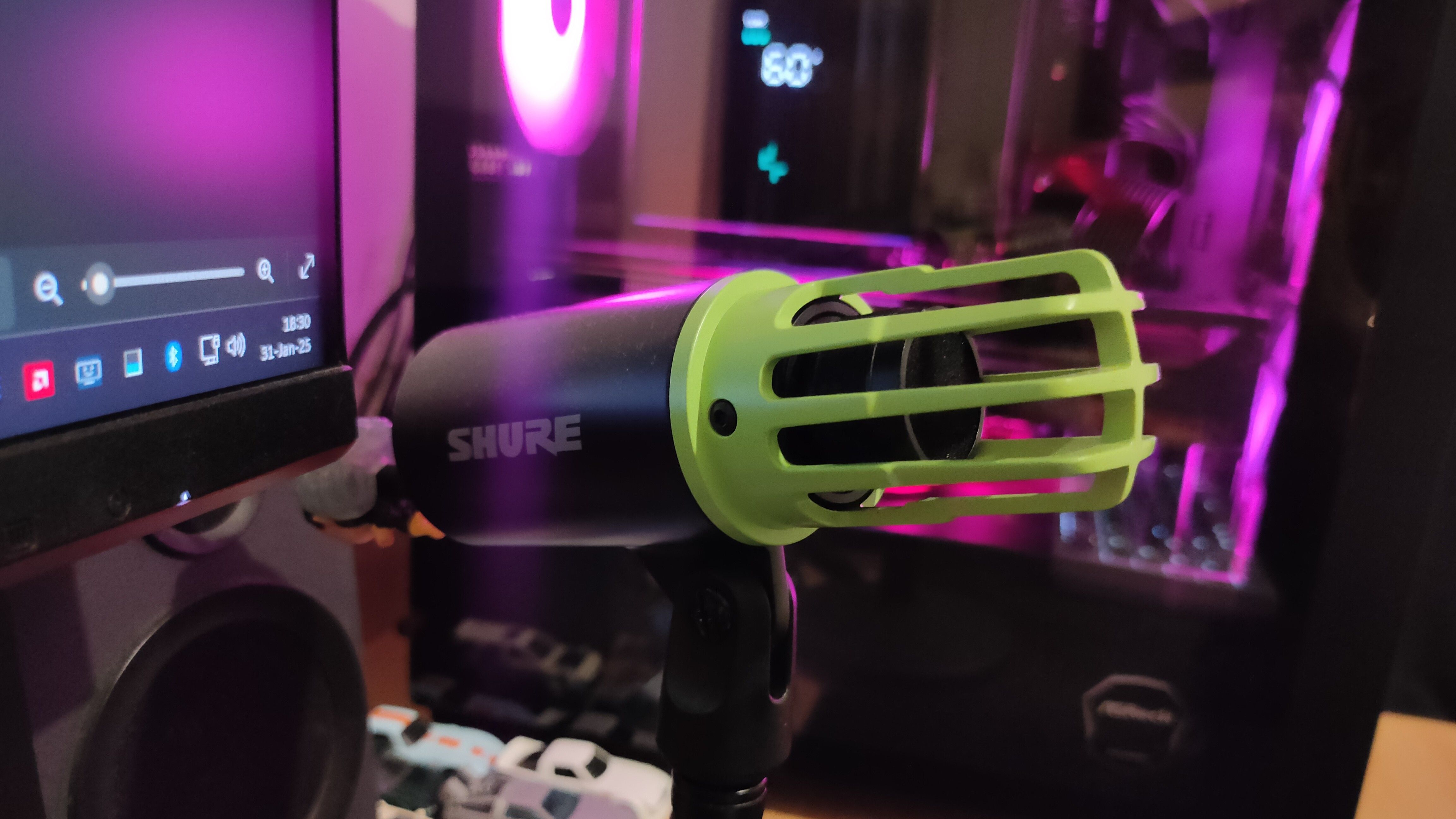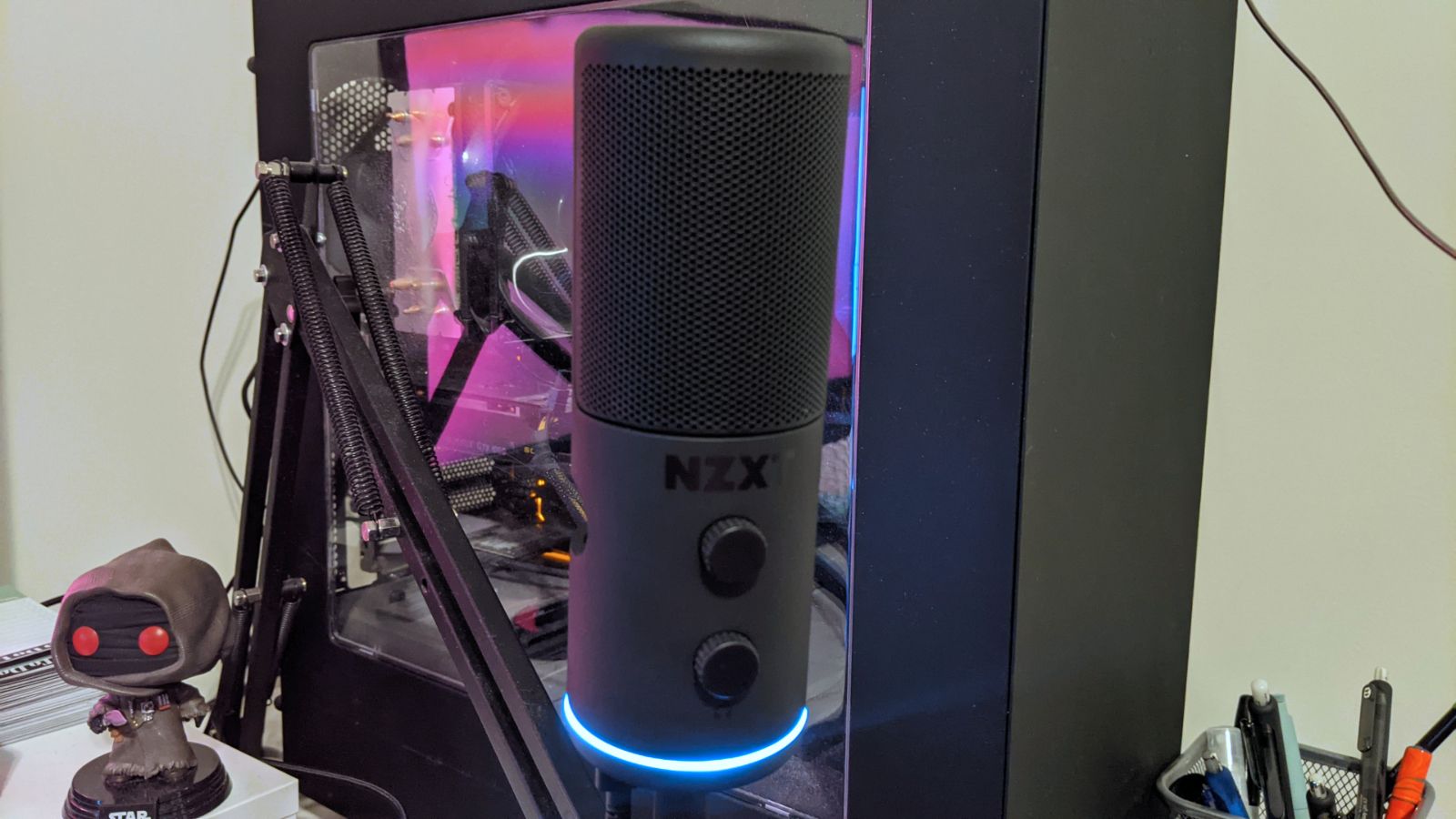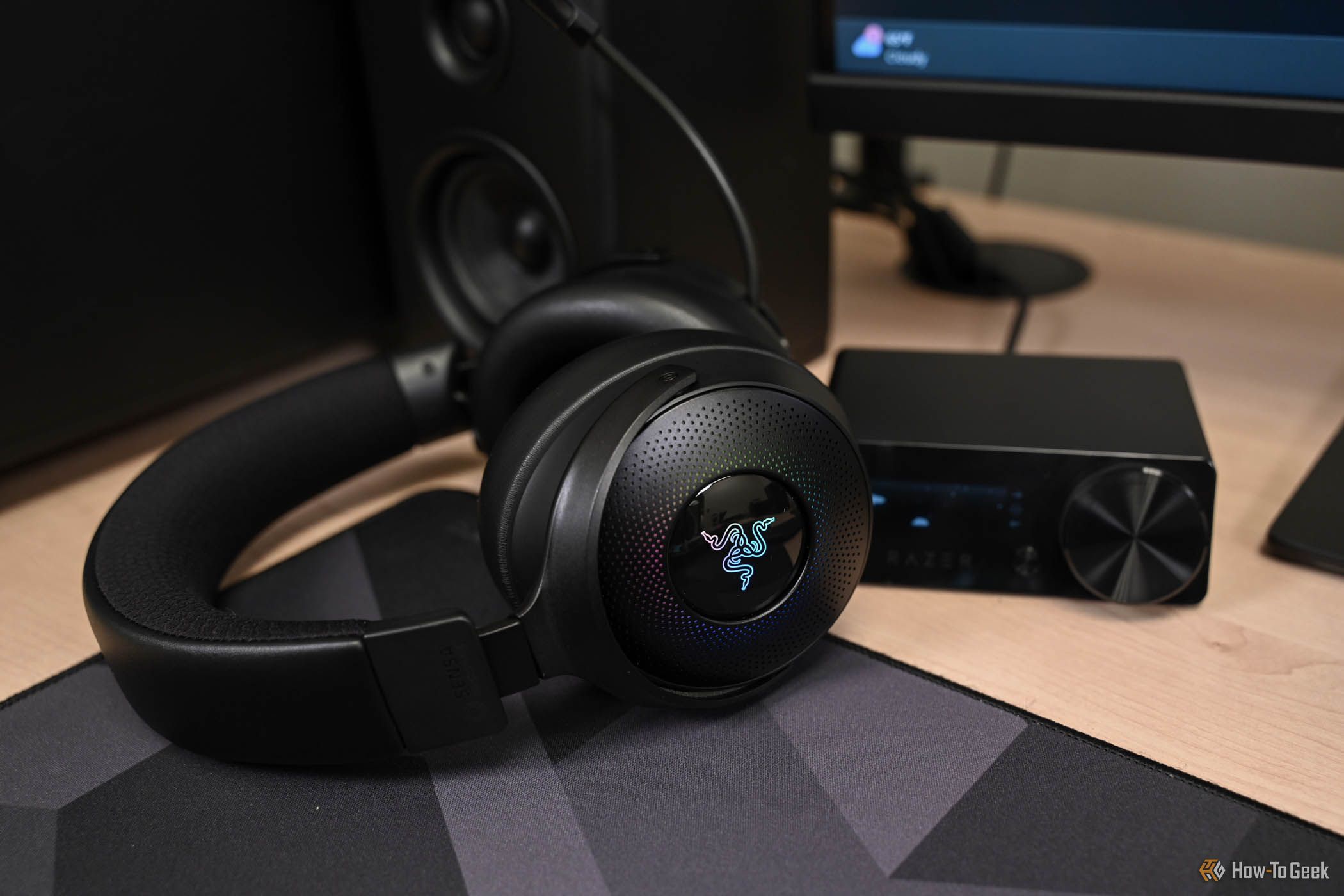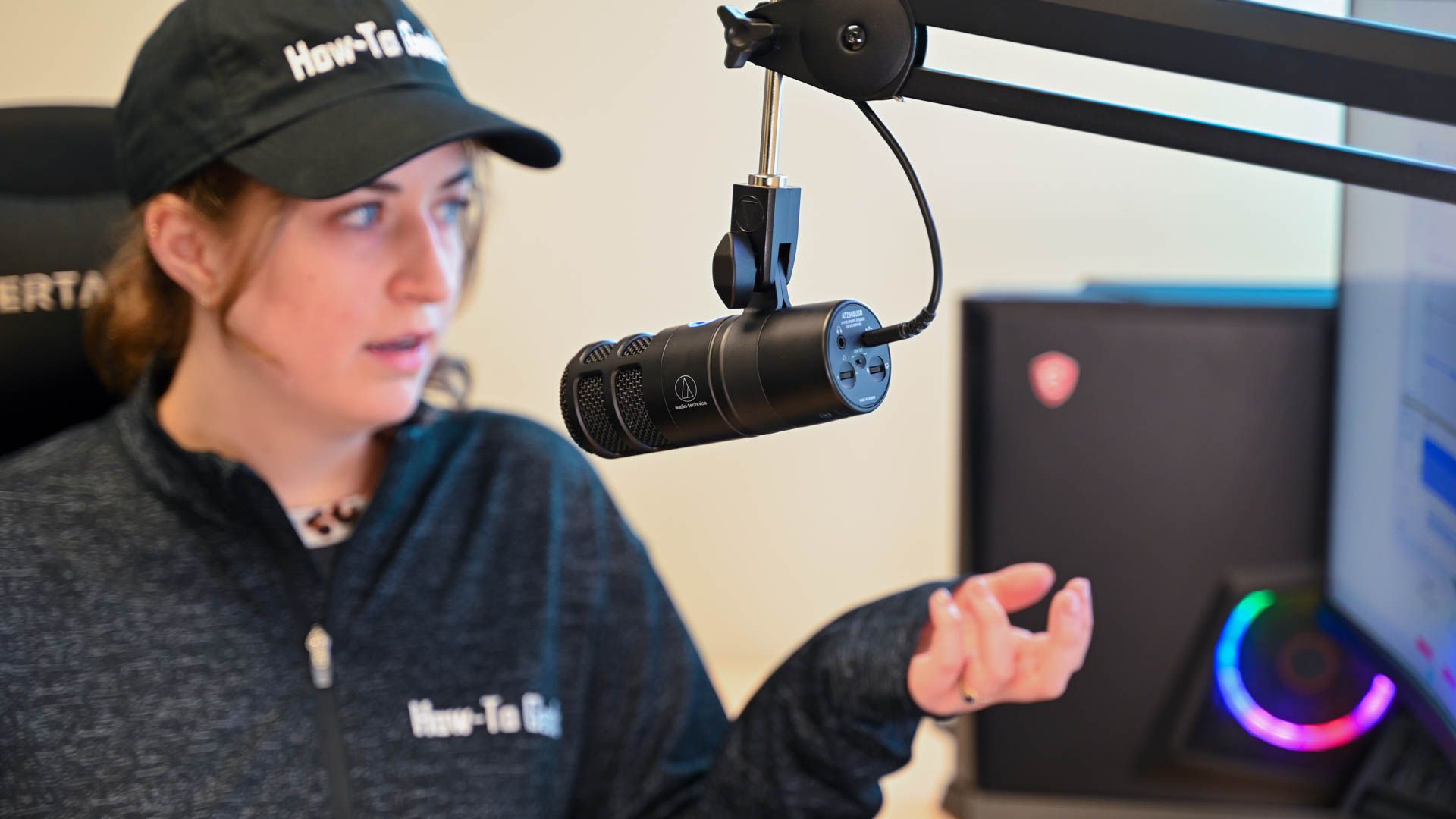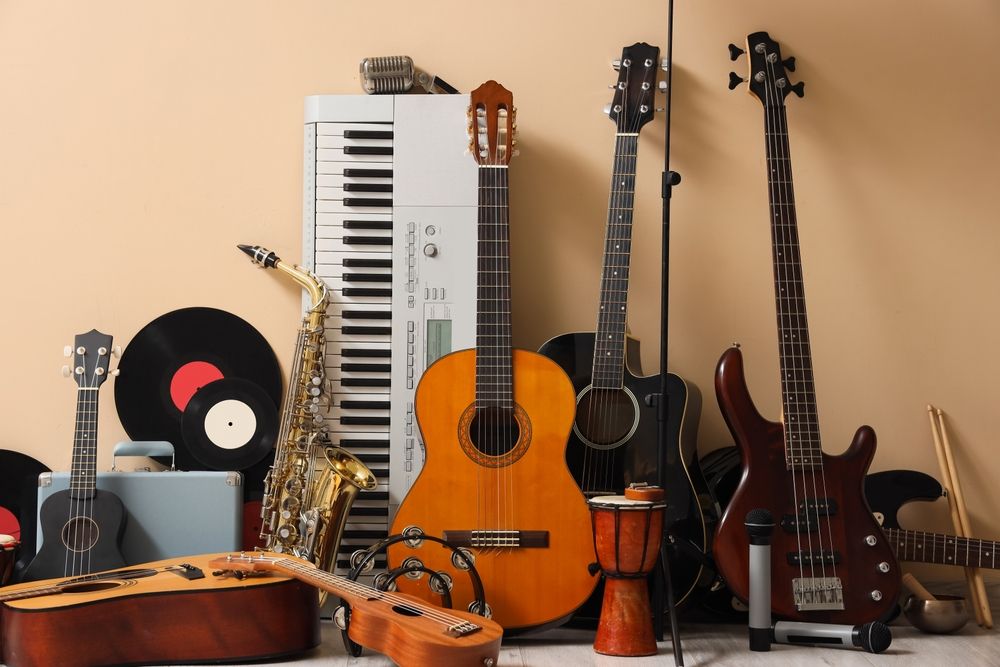Summary
- A dynamic mic uses electromagnetic induction and a condenser mic uses variable capacitance.
- Dynamic mics are less sensitive, while condensers capture more detail but also pick up more noise.
- Dynamic mics are ideal for live performances and calls, whereas condenser mics are better suited for studio recordings.
If you’re looking to upgrade your audio recording equipment, you’ll likely find yourself choosing between two main types of microphones: condenser and dynamic. Unless you’re an audio engineer, these terms probably don’t mean much to you. Don’t worry; I’m here to break it down for you.
Dynamic and Condenser Microphones Work Completely Differently
To better understand why dynamic and condenser mics sound so different, let’s first go over how they work. Dynamic mics use electromagnetic induction to convert sound waves into electrical signals. They operate similarly to speakers, but in reverse.
A small plastic diaphragm vibrates when sound strikes it. Attached to the diaphragm is a voice coil that moves within a magnetic field. These movements of the voice coil generate an electrical signal, which then typically gets boosted using a transformer and sent to your computer for further processing.
Condenser mics operate on the principle of variable capacitance. Condenser mics have a conductive diaphragm attached to a magnetic plate (i.e., backplate), forming a capacitor. When sound waves cause the diaphragm to vibrate, the distance between the diaphragm and the magnetic plate changes, altering the capacitance and generating a weak electric signal.
In fact, the signal is so weak that condenser mics can’t work without a phantom power source. USB condenser mics can take power directly from the USB connection, but XLR condenser microphones require phantom power with the appropriate voltage (usually +48V) from a device such as an audio interface, mixer, or preamp.
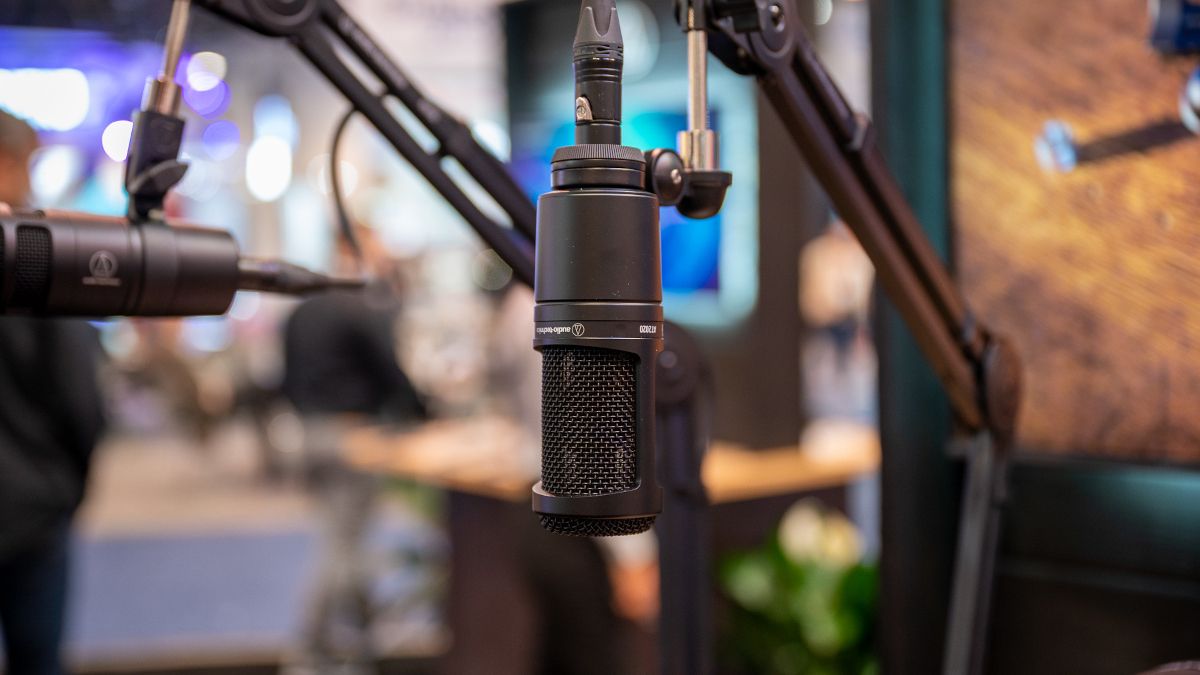
Related
What Is a Condenser Microphone, and How Do They Work?
Condenser mics offer more sensitivity for detailed recordings, but they’re not the best tool for every job.
The Differences in Sound
With the technical explanations out of the way, let’s now focus on the practical differences in how they sound. One of the most significant differences is sensitivity. Dynamic microphones are significantly less sensitive, meaning they pick up less background noise, especially high frequencies. They can still pick up noise; it’s just less than that of a condenser.
Dynamic mics also handle sudden, loud noises better. A good example are plosive sounds (such as “b” in “bat”). If you’re close to a condenser mic without a pop filter, a plosive sound can cause clipping (cutting out the sound), whereas a dynamic mic will handle it without a problem. Similarly, if you yell into a condenser mic, the sound usually distorts in an unpleasant way, but with dynamic mics, it’ll just sound like you’re screaming in lowercase.
Since condenser mics provide a high level of sensitivity, they can capture a broader frequency range and a greater level of detail. They also tend to sound a bit brighter and “airy” compared to dynamic mics, which work best with mid-range sounds like vocals. They can even pick up subtle sounds like mouth noises, which can be desirable for artists.
However, condenser mics also pick up a lot of noise. Fortunately, this can be somewhat mitigated by switching to a cardioid pattern so that it only picks up sound from the front. Dynamic mics still have a more “focused” sound, though.
While both dynamic and condenser mics can be made physically large or small, you’ll more often see tiny condenser microphones, as they can still sound good and get loud even with a small diaphragm. Their sensitivity and size is the reason why they’re usually built into gaming headsets.
Another plus for condensers is that you can place them further away from the audio source. Technically, your mouth should be close to either type of mic to achieve the best sound and minimize unwanted noise. However, it’s far more important with dynamic mics. While a condenser mic can be 12 inches away and still sound excellent, a dynamic mic performs best when positioned 2–6 inches from the source.
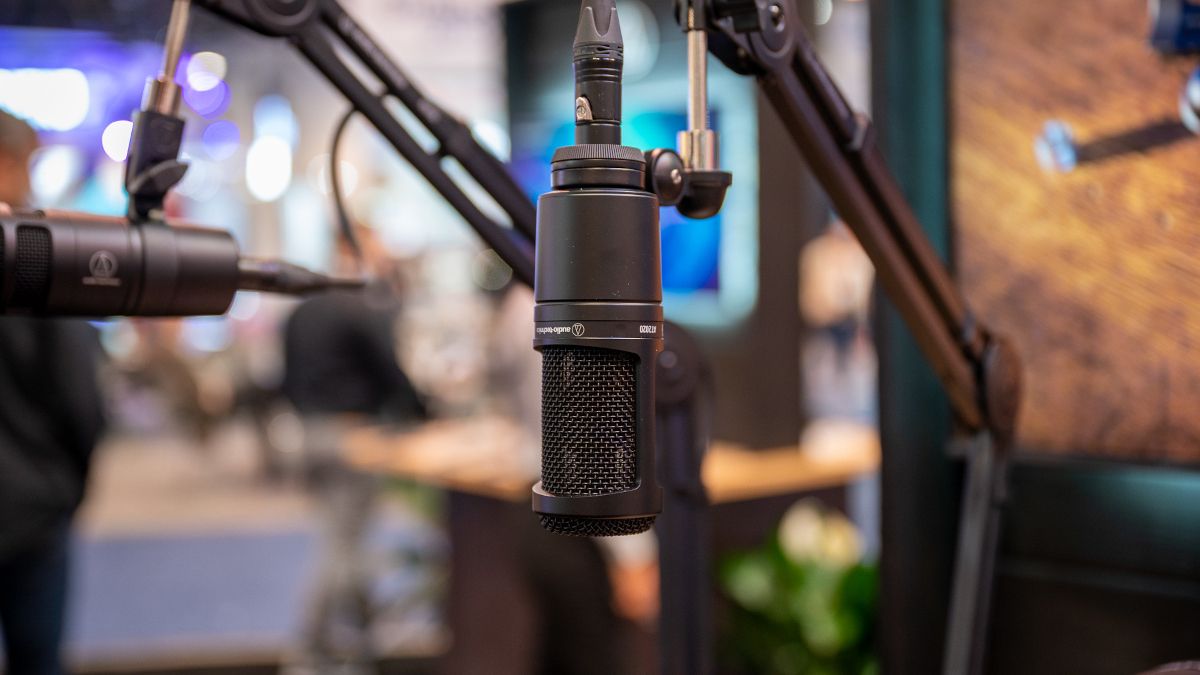
Related
What Is Phantom Power, and Does Your Microphone Need It?
And do you need it to power your microphone?
Which One Should You Pick?
If you need a microphone for online meetings, street interviews, podcasts, or voice chats on Discord, a dynamic microphone will generally perform better. All things being equal, a dynamic mic sounds better in an untreated room and picks up less background noise. Dynamic mics are known for their excellent clarity when capturing voices. They’re pretty much plug-and-play and tend to be more durable, which helps with accidental drops.
Thanks to their focused sound, dynamic mics are perfect for live performances, which is why you’ll often see them on stage. They excel at capturing louder sources, such as drums, acoustic and electric guitars, and brass instruments, because they can handle higher amounts of air pressure without clipping or distorting.
However, the same strengths that make a dynamic mic great in certain scenarios can also be its limitations. If you need to capture higher frequencies, subtle sounds, or ambiance, a condenser mic is the better choice.
Their capture distance is also an important factor, especially if you need to place the microphone further away. For example, Twitch streamers who like to step away from their PC during a stream to perform activities like mail unboxing or dancing need a condenser mic if they want to be heard from a distance and don’t have a lapel mic.
Condenser mics excel in controlled environments, which is why you’ll often see them used with an isolation shield and pop filter. Once the gain is set correctly, a condenser mic is perfect for studio recording vocals and can also work well for a variety of instruments, including guitar amps and brass instruments when placed further away.
However, when it comes to recording instruments, the choice really depends on the sound you’re after. Some prefer condenser mics better, while others swear by dynamic ones. If you don’t have access to test both types, listen to a few samples to decide which one you prefer.
It’s easy to get lost in all the details with microphones, making the choice seem overwhelming. However, you should know that the type of mic you choose doesn’t have to be limited to traditional use cases. You can still use a dynamic mic for studio recording or a condenser for gaming.
The truth is that both types can sound excellent, as long as it’s a quality mic. Before Shure sent me a free MV6 (dynamic), I used a HyperX SoloCast (condenser), and it worked just fine for Discord when combined with its noise-canceling technology, Krisp. The most important factors are proper placement and correct gain amount if auto-gain isn’t an option, which usually means fairly high for a dynamic and relatively low for a condenser mic.


